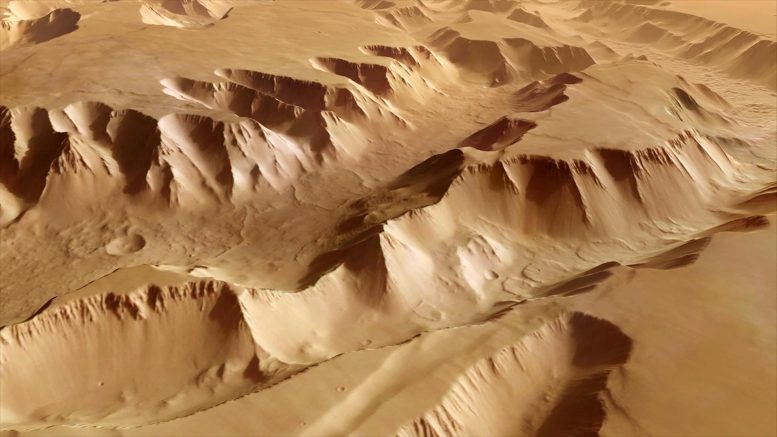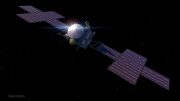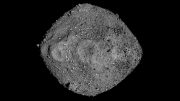
Noctis Labyrinthus, a sprawling system of valleys on Mars, is situated between Valles Marineris and the Tharsis region’s vast volcanoes. A video created by Mars Express’s HRSC visualizes a flight over this landscape, revealing ‘graben’ formations caused by intense Tharsis volcanism. This phenomenon resulted in the stretching and subsiding of the Martian crust. Credit: ESA/DLR/FU Berlin & NASA/JPL-Caltech/MSSS
The Mars Express provides a detailed visualization of Noctis Labyrinthus, a vast valley system on Mars, revealing its unique geological formations and the effects of Tharsis volcanism on the Martian crust.
Nestled between the colossal Martian ‘Grand Canyon’ (Valles Marineris) and the tallest volcanoes in the Solar System (the Tharsis region) lies Noctis Labyrinthus – a vast system of deep and steep valleys that stretches out for around 740 miles (1190 km), or approximately the length of Italy here on Earth).
This video visualizes a flight over the eastern part of Noctis Labyrinthus as seen by Mars Express’s High Resolution Stereo Camera (HRSC). It presents a perspective view down and across this fascinating landscape, showing distinctive ‘graben’ – parts of the crust that have subsided in relation to their surroundings. The intense volcanism in the nearby Tharsis region is to blame for the formation of these features; this volcanism caused large areas of Martian crust to arch upwards and become stretched and tectonically stressed, leading to it thinning out, faulting, and subsiding.
The video begins on a rotating full-globe of Mars, with white polar caps and mottled tan surface visible. It then zooms in on the westernmost part of the large Valles Marineris canyon system, a region highlighted by a white box, and swaps to a new Mars Express visualization of Noctis Labyrinthus. The camera then flies slowly across a landscape that is broken apart by deep intersecting valleys and canyons. Credit: ESA/DLR/FU Berlin & NASA/JPL-Caltech/MSSS
The highest plateaus seen here represent the original surface level before chunks of surface fell away. The intersecting canyons and valleys are up to 30 km wide and six km deep. In many places, gigantic landslides can be seen covering the valley slopes and floors, while other valley slopes show large dune fields created by sands blown both down and upslope by Martian winds.
ESA has highlighted Mars Express images of Noctis Labyrinthus before, in 2006 and 2015. Mars Express has orbited the Red Planet since 2003, imaging Mars’s surface, mapping its minerals, studying its tenuous atmosphere, probing beneath its crust, and exploring how various phenomena interact in the Martian environment.
Processing notes: The video was created using an image mosaic built over eight orbits (0442, 1085, 1944, 1977, 1988, 10497, 14632, and 16684) by ESA’s Mars Express and its HRSC. This mosaic is combined with topographic information from a digital terrain model to generate a three-dimensional landscape, with every second of the video comprising 50 separate frames rendered according to a pre-defined camera path. The opening credits (Mars globe, first 24 seconds) were created using the recent 20-year Mars global color mosaic; this opening sequence has a three-fold vertical exaggeration, while the subsequent flight animation has a 1.5-fold exaggeration. Haze has been added to conceal the limits of the terrain model, and starts building up at distance of between 150 and 200 km. The video is centered at the Martian coordinates of 7°S, 265°E.









Be the first to comment on "Red Planet Odyssey: Mars Express’s Stunning Flight Over “Labyrinth of Night” [Video]"